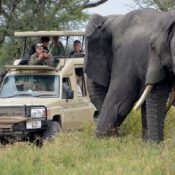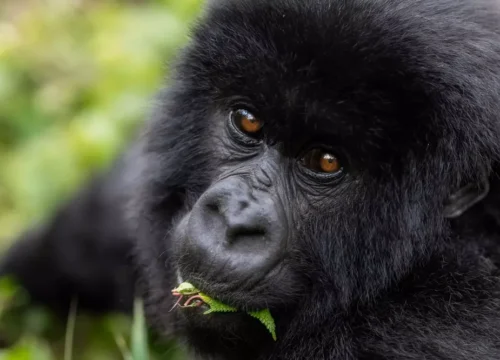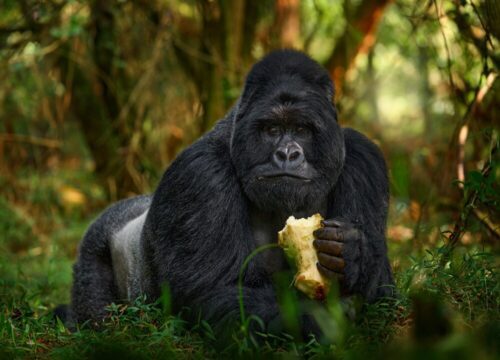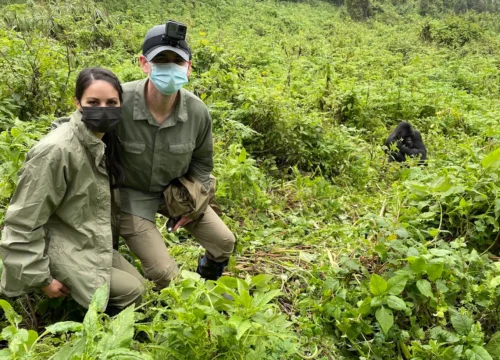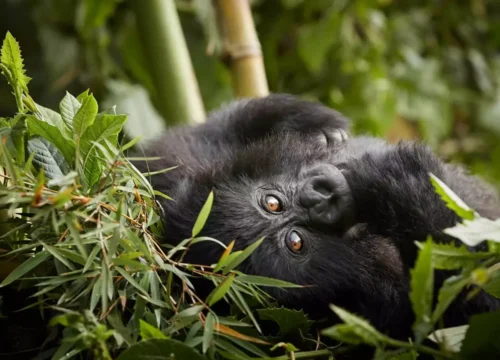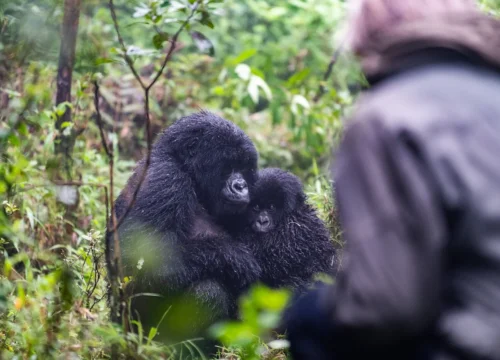Geography and Physical Features of Victoria Falls
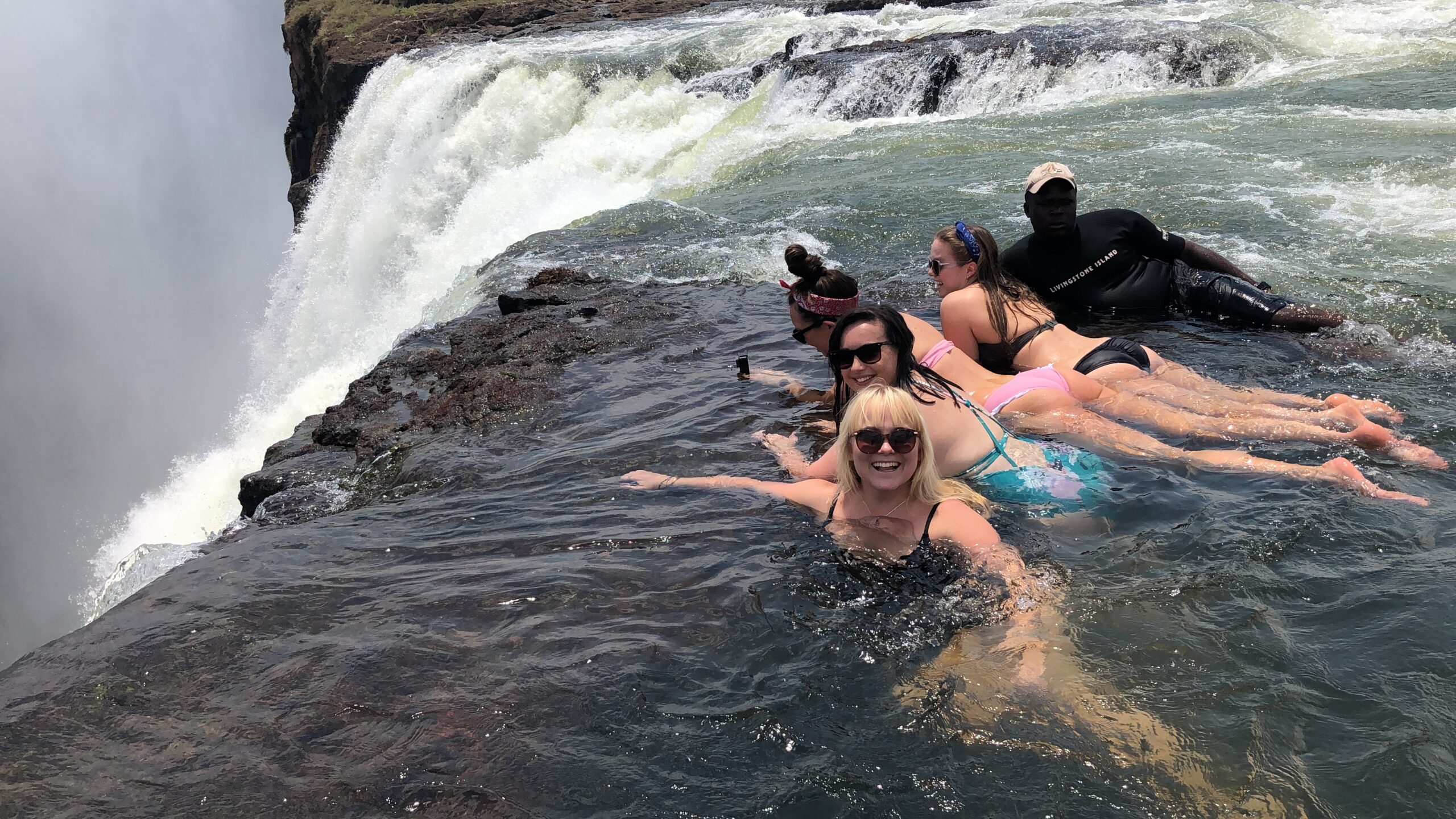
Victoria Falls, one of the most spectacular natural wonders of the world, is renowned for its breathtaking beauty and grandeur. Located on the border between Zambia and Zimbabwe, this majestic waterfall is a must-visit destination for travelers seeking an unforgettable experience. In this Geography and Physical Features of Victoria Falls article, we will explore the geography and physical features of Victoria Falls, providing a comprehensive guide to this magnificent natural wonder.
Geographic Location
Victoria Falls is situated on the Zambezi River, which is the fourth longest river in Africa, stretching approximately 2,574 kilometers (1,599 miles). The falls are located at the midpoint of the river’s course, straddling the border between Zambia to the north and Zimbabwe to the south. The nearest towns are Livingstone in Zambia and Victoria Falls in Zimbabwe, both of which serve as gateways to the falls.
Formation and History
Victoria Falls, known locally as “Mosi-oa-Tunya,” which means “The Smoke That Thunders,” was formed over millions of years through the process of erosion. The basalt rock over which the Zambezi River flows is crisscrossed with a series of faults filled with weaker sandstone. Over time, the river has exploited these weaknesses, carving out deep gorges and creating the dramatic waterfall we see today.
Scottish explorer David Livingstone is credited with discovering Victoria Falls for the Western world in 1855. He named the falls in honor of Queen Victoria of England. However, the local tribes had known about and revered the falls for centuries before his arrival.
Physical Features
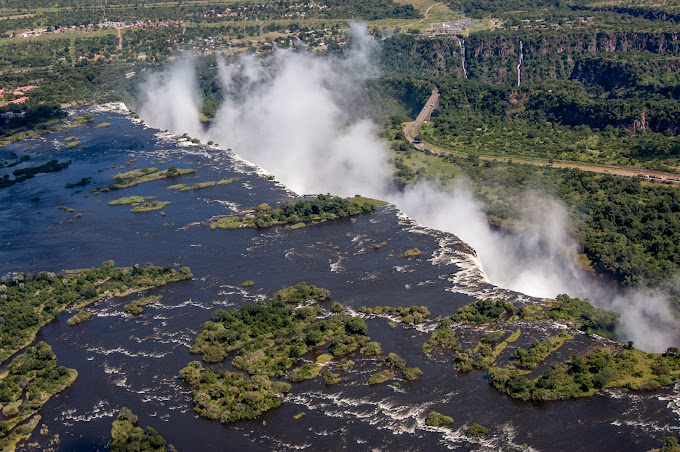
Width and Height
Victoria Falls is considered the largest waterfall in the world based on its combined width and height. The falls span approximately 1,708 meters (5,604 feet) wide, making it the widest curtain of falling water in the world. The height of the falls ranges from 80 meters (262 feet) to 108 meters (354 feet), depending on the specific section of the waterfall.
The Main Cataracts
Victoria Falls is divided into several distinct sections by various islands and rock formations at the crest. The main cataracts, from west to east, include:
- Devil’s Cataract: This is the westernmost section of the falls, named for a nearby island that creates a narrow chasm through which the water plunges.
- Main Falls: The largest and most dramatic section, where the majority of the Zambezi River’s flow cascades over a wide basalt ledge.
- Rainbow Falls: Named for the rainbows that are often visible in the mist, this section is the tallest, with a height of about 108 meters (354 feet).
- Horseshoe Falls: A smaller, semi-circular section of the falls.
- Eastern Cataract: Located on the Zambian side, this section is less visible but still impressive.
Gorges
Below Victoria Falls, the Zambezi River flows through a series of gorges that have been carved out over millennia. The First Gorge is the immediate drop-off of the waterfall, while subsequent gorges stretch for approximately 150 kilometers (93 miles) downstream. These gorges are characterized by steep, rocky walls and turbulent rapids, making them a popular destination for white-water rafting.
Islands
Several islands are located at the crest of Victoria Falls, dividing the flow of the Zambezi River. The most notable of these are Livingstone Island and Boaruka Island (also known as Cataract Island). Livingstone Island, where David Livingstone first viewed the falls, offers visitors a unique vantage point for observing the falls up close.
Mist and Rainbows
One of the most striking features of Victoria Falls is the perpetual mist that rises from the falling water. This mist can be seen from miles away and is often referred to as “the smoke” in the local name “Mosi-oa-Tunya.” The mist creates a microclimate around the falls, supporting a lush rainforest that contrasts sharply with the surrounding savanna.
Rainbows are a common sight at Victoria Falls, formed by the refraction and reflection of sunlight through the mist. These rainbows can be seen during the day and, during a full moon, visitors can even witness a “moonbow,” or lunar rainbow.
Flow Variations
The flow of water over Victoria Falls varies significantly throughout the year, influenced by seasonal rainfall in the Zambezi River’s catchment area. The rainy season, which typically runs from November to April, brings high water levels and an increased volume of water cascading over the falls. During this time, the falls are at their most dramatic, with a thundering roar and massive plumes of mist.
In contrast, the dry season, from May to October, sees a reduction in water flow. While the falls are less voluminous, this period offers unique opportunities to explore the geological formations and rock pools that are otherwise submerged.
Ecological Significance
Victoria Falls and its surrounding area are of great ecological significance. The constant mist supports a rainforest ecosystem that is home to a diverse range of plant and animal species. Visitors can encounter various bird species, such as the Taita falcon and Verreaux’s eagle, as well as mammals like baboons and vervet monkeys.
The Zambezi River itself is rich in biodiversity, supporting numerous fish species, crocodiles, and hippopotamuses. The falls also play a crucial role in the hydrology of the region, affecting water levels and ecosystems downstream.
Visiting Victoria Falls
Victoria Falls is accessible year-round, with each season offering its own unique experiences. The falls can be viewed from multiple vantage points, with the most popular being Victoria Falls National Park in Zimbabwe and Mosi-oa-Tunya National Park in Zambia. Both parks offer well-maintained trails and viewing platforms that provide spectacular views of the falls.
Adventure seekers can engage in activities such as bungee jumping from the Victoria Falls Bridge, white-water rafting in the gorges below the falls, and helicopter flights that provide an aerial perspective of this natural wonder. For those seeking a more leisurely experience, boat cruises on the Zambezi River offer a serene way to take in the beauty of the falls and its surroundings.
Conclusion
Victoria Falls is a geographical and physical marvel that captivates visitors with its sheer scale and beauty. Its unique combination of width, height, and water volume makes it one of the most awe-inspiring waterfalls on the planet. Whether you are drawn by its dramatic cascades, the lush rainforest, or the thrilling adventures it offers, Victoria Falls promises an unforgettable experience that will leave you in awe of nature’s power and splendor.
Plan your visit to Victoria Falls with Nextgen Safaris, your trusted partner in exploring the best of Africa’s natural wonders. Our expertly curated tours ensure you experience the very best that Victoria Falls has to offer, from breathtaking views to exhilarating activities. Discover the magic of Victoria Falls and create memories that will last a lifetime
GENERAL INFORMATION
ENTRY REQUIREMENTS:
All visitors to Victoria Falls must have a valid passport with at least 4 consecutive blanks pages. The Government of Tanzania has rolled out an online Visa application portal accessible on internet. Any applicable visa and/or relevant documentation are the responsibility of the traveler. For further information on Visa requirements visitors are advised to contact their nearest Zimbabwe Embassy or Consulate.
LANGUAGE: English
TIME: GMT +3
CLIMATE: Southern Africa climate is predominantly tropical. The long rains are from mid-March to late May and the short rains from November to January. The hottest months are from October to February and the coolest months are June to August.
VOLTAGE: 220 Volts/AC50Hz. Sockets are UK style, 3 pin square plugs. Power is from the National Grid in the city/major towns and generator with inverter back up in the Safari Lodges and Camps.
CURRENCY: Foreign currency must be changed at the Bank, Bureau de Change, and Hotel/Safari lodge/Camp/Resort. Major Credit Cards, Master card, Visa, American Express, are usually accepted throughout the country. Where credit cards are accepted, the payment will normally be recorded in US$ regardless of the card’s default currency. However, US$ older than 2009 are only accepted
CLOTHING: Dress is mainly informal and should be comfortable as well as practical. Something warm should be brought along for early morning and evenings. Safari clothes are available from hotels/lodges/camps.
BAGGAGE: Where possible, travel light. Baggage space on safari is limited to medium suitcase or soft bag per person plus reasonable amount of hand luggage. There is 15 Kilogram per person limit on all flights to the wildlife sanctuaries. Excess luggage must be stored in your arrival hotel.
WATER: You will find many different of opinion of what is safe and what is not. We recommend for peace of mind, to drink local Bottled Mineral water. It is important to drink plenty of water especially during the hotter months. We would recommend that guests drink at least 2 to 3 litres of water per day to limit the effects of dehydration.
HEALTH: Southern Africa is a safe and secure destination; however, it is a good idea to take a few precautions. Kindly consult your GP or local doctor at least 6 weeks before you travel, with regards:
Malaria prophylactics. East Africa is a known malaria area and preventive measures are essential. You are advised to take one of the recommended anti-malarial drugs. Be sure to wear long sleeved shorts and trousers after sunset and spray the exposed parts of your body with a mosquito repellent spray. The hotels provide mosquito repellent sachets as part of the room’s amenities in all our locations.
Remember to protect yourself from direct sun rays with sunscreen cream or safari hat.
DIETARY REQUIREMENTS: For those guests with specific dietary requirement, please ensure Imbasa is notified prior to travel so that the respective Hotels and Lodges are informed
GRATUITIES: As a guideline and dependent on how happy you are, we would suggest the following:
The General Hotel/Lodge/Camp Staff – Approximately U$ 10.00 per person per day
Driver Guides – Approximately US$ 15.00 to US$ 20.00 per person per day
PHOTOGRAPHY: Please be careful when photographing public buildings, airports, bridges, the national flag and people in uniform. Ensure that you have sought permission before photographing local people and their villages. If in doubt, please check with your guide.
Read about
10 Things you Should NOT DO on an African Safari.
What to expect on a safari in Uganda.
Bwindi Impenetrable National Park
How to Choose the Best Tour Operate for Your Safari in Africa
12-Day Gorilla Tracking in Bwindi
East African Safaris
1 Day Jinja Ultimate tour Experience
1 Day White Water Rafting in Jinja
3 Days Bwindi Gorilla Habituation via Rwanda
3 Day Birding Safaris and Photography in Uganda
3 Day Safari to Queen Elizabeth National Park
3 Day fly in Gorilla Trekking Safari from Masai Mara
3 Day Grand Gorilla Trekking Safari
4 Day Chimpanzee and Gorilla Trekking Safari
4 Day Murchison Falls and Jinja tour
Packages with Gorilla Trekking
1 Day Uganda Gorilla Trekking Safari from Kigali Rwanda
3 Days Fly in Gorilla Habituation Safari
3 Days Budget Gorilla Safari in Uganda
3 Days Customizable Rwanda Gorilla Tracking Safari
3 Days Gorilla Trekking Experience and Lake Bunyonyi
3 Days Last Minute Gorilla Trekking & Lake Bunyonyi in Uganda
3 Days Rwanda to Uganda Gorilla Safari
3 Days Uganda Gorilla Safari from Kigali
4 Days Gorilla and Golf Safari in Uganda
4 Days Rwanda Gorilla Adventure
5 Day Gorillas and Game Drive Safari
5 Days Golf and Gorilla Safari in Uganda
5 Days Rwanda Gorillas and Culture Tour
6 Day Uganda Gorilla and Wildlife Tour
6 Days Budget African Safari with Gorilla Trekking
7 Days Gorilla and Chimpanzee Trekking in Uganda
7 Days Uganda Budget Gorillas and Primate Trip
8 Days Gorilla Trekking Vacation to Bwindi National Park
8 Days Uganda Gorilla and Chimpanzee Safari
10 Days Rwanda and Uganda Gorilla Safari
14 Days Uganda Rwanda Study Tour & Gorilla Trekking Trip
Best African Destinations Itineraries
Southern Africa Destination Itineraries
Eastern Africa Destination Itineraries
Northern Africa Destination Itineraries
Indian Ocean
Recent Posts
Last Minute Deals
Quick booking process
+49 1575 4711313



